Georgia is investing in architecture "like post-war Germany" says Jürgen Mayer H
Georgia is using architecture to rebrand itself and "show that there's a change going on" according to architect Jürgen Mayer H, who has built a range of striking border checkpoints, airports and service stations in the country (+ slideshow).
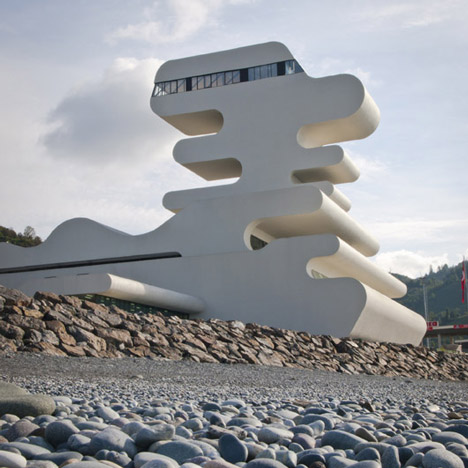
"Georgia is a country in need of a lot of infrastructure and a lot of things that make the country run like a normal country," the German architect said in an interview with Dezeen.
"So there's an urgency. I sometimes compare it to Germany in post-war times when a town hall had to be built, a bus station had to be built, just to make the country work, and that resulted in some great contemporary architecture."

His architectural practice, J Mayer H, has worked on a dozen infrastructure projects across the country, which is strategically located in the Caucasus between Europe and Asia and which was part of the Soviet Union until 1991.
Following independence and the "Rose Revolution" democratic reforms of 2003, Georgia embarked on a major investment programme, hiring leading architects to renew the country's infrastructure.
Projects include an airport in Kutaisi by Dutch firm UNStudio and a public services office in Tbilisi by Italian architects Massimiliano and Doriana Fuksas, as well as law courts, border crossings and town halls.
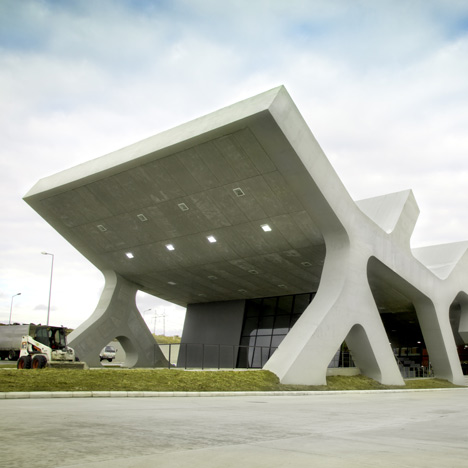
The focus on infrastructure is an attempt to rebrand the young country, which is on an important transit route between west and east, said Mayer H.
"Georgia has a very rich history in architecture but it's also a very transitory country," he said. "People drive and transport things from Azerbaijan to Turkey, and architecture along those transportation routes is maybe the only thing that you see when you drive through the country."
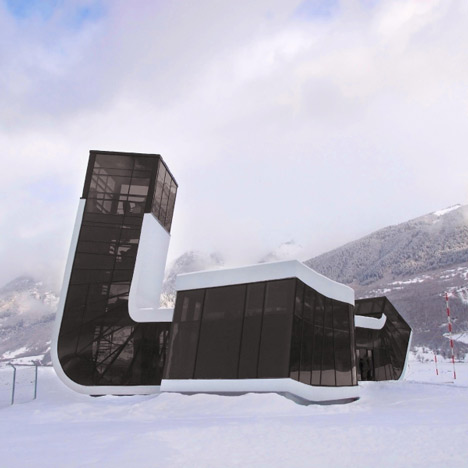
These projects are helping Georgia forge a new identity, a decade after the period of civil unrest and economic crisis that followed the country's independence from the Soviet Union.
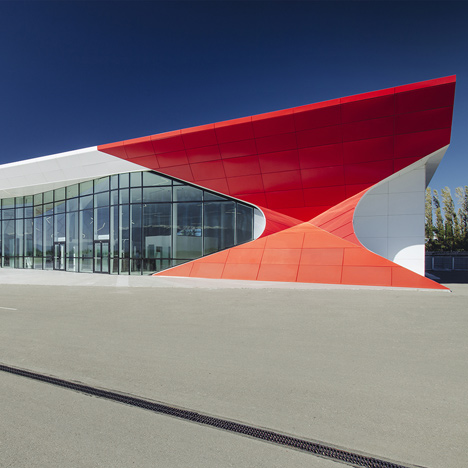
"Georgia has a very rich history in architecture but it's in a period of change right now," said Mayer H, in an interview with Dezeen in Miami last week, where the architect presented an artwork at the Art Basel fair.
"Nothing really happened after the Soviet regime and architecture works quite well to show there's a certain reach towards modernisation and a transformation of the country, also connecting the country to the West," he said. "These projects are a very visible sign to show that there's a change going on."
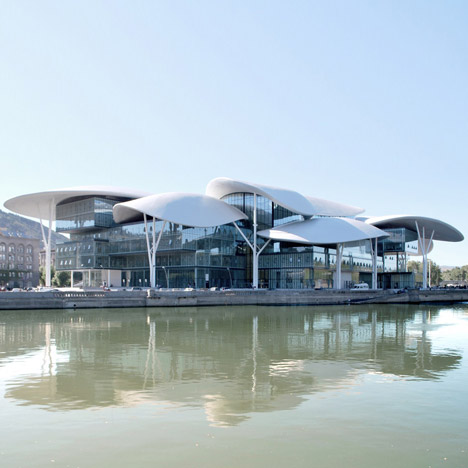
Mayer H. became involved in that change at the invitation of Mikheil Saakashvili, who was president of Georgia from 2004 until last month.
"He saw our Metropol Parasol project [in Seville, Spain] in a book and he was inspired to invite me to talk about projects in Tbilisi," the architect recounted. "I think he had a really interesting vision to see architecture not only in buildings that we think are high cultural buildings, but also in very mundane structures."
"To see that as an architectural contribution - how you welcome people entering your country or say goodbye with your checkpoint - I think that's really impressive," he added.
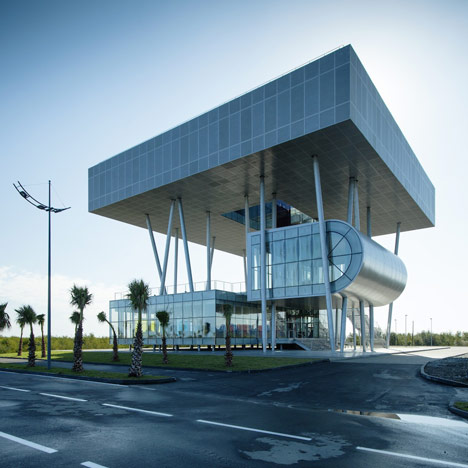
Saakashvili stepped down as president in November after serving two consecutive terms, so Jürgen Mayer H predicts a pause in the country's architectural development. "I think now it's a moment where they stop a little bit and the new government uses this moment to rethink if this is the right speed of transformation, if it's the right direction," he said. "But of course there's so much curiosity in the country, so it's just having a little break before it continues again."
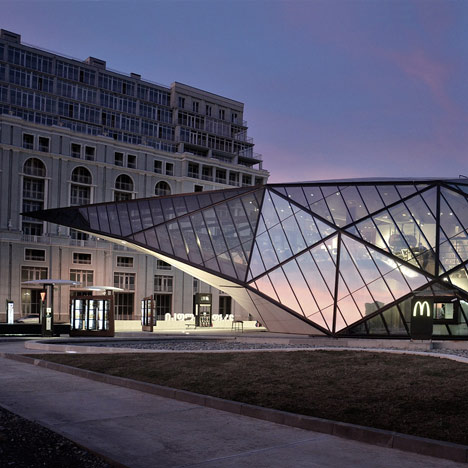
J Mayer H have three ongoing projects in Georgia: a 2500-square-metre private house; Saakashvili's presidential library in the capital Tbilisi; and an train station that will connect west and east.
"The station is in the middle of nowhere in the high plateau," he told us. "It connects Turkey to Azerbaijan so they have to change the width of the train tracks, so everybody has to get out and everything has to be reloaded with security and customs and checkpoints and everything."
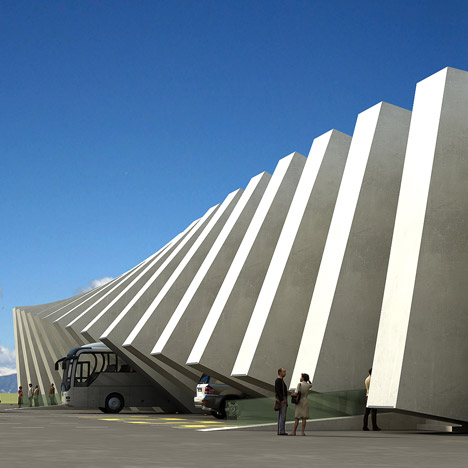
Here's an edited transcript of the interview with Jürgen Mayer H:
Marcus Fairs: What are you working on?
Jürgen Mayer H: Right now we have a very interesting moment. We are finishing three projects in Georgia. We're building about 12 altogether, mostly infrastructural projects like a rest stop or a check point between Georgia and Turkey and the Black Sea coast. We're also working on two high rises in Dusseldorf and a university. We're involved in private houses in San Francisco and Copenhagen, and we do art installations.
Marcus Fairs: Why did Georgia come to you to design its infrastructure?
Jürgen Mayer H: Well the former president, Mikheil Saakashvili, He saw our Metropol Parasol project [in Seville, Spain] in a book and he was inspired to invite me to talk about projects in Tbilisi, so within a week we met. This project didn't go anywhere but it was the beginning of a very long conversation and a lot of projects that came up. I think he had a really interesting vision to see architecture, not only in buildings that we think are high cultural buildings, but also in very mundane structures.
Marcus Fairs: Why did he want to invest in those mundane structures?
Jürgen Mayer H: Georgia has a very rich history in architecture but it's also a very transitory country. It's in change right now, but also it's a transit country. People drive and transport things from Azerbaijan to Turkey, and architecture along those transportation routes is maybe the only thing that you see when you drive through the country. To see that as an architectural contribution - how you welcome people entering your country or say goodbye with your checkpoint - I think that's really impressive.
Marcus Fairs: Is it in some way trying to brand the country and give it an identity?
Jürgen Mayer H: Nothing really happened after the Soviet regime and architecture works quite well to show there's a certain reach towards modernisation and a transformation of the country, also connecting the country to the West. These projects are a very visible sign to show that there's a change going on
On the other hand, Georgia is a country in need of a lot of infrastructure and a lot of things that make the country run like a normal country. So there's an urgency. I sometimes compare it to Germany in post-war times when a town hall had to be built, a bus station had to be built, just to make the country work, and that resulted in some great contemporary architecture.
Marcus Fairs: But Saakashvili is no longer the president, so is this the end of your work in Georgia?
Jürgen Mayer H: Well he had two election periods so he couldn't be reelected, and we were of course very much involved with the last government to work on these projects. I think now it's a moment where they stop a little bit and the new government uses this moment to rethink if this is the right speed of transformation, if it's the right direction, but of course there's so much curiosity in the country, so it's just having a little break before it continues again.
Marcus Fairs: What are the three projects that you're finishing off and when will they be finished?
Jürgen Mayer H: We're doing a very big single family house, two and a half thousand square metres in the centre of Tbilisi. We're building an international train station which is in the middle of nowhere in the high plateau. It connects Turkey to Azerbaijan so they have to change the width of the train tracks, so everybody has to get out and everything has to be reloaded with security and customs and checkpoints and everything. Then also we're doing the presidential library for Saakashvili, which will be opened early next year.